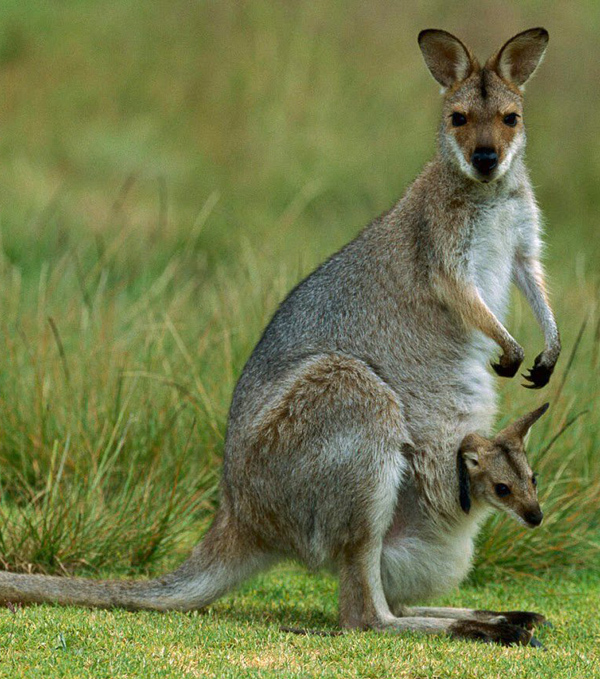HEALTH INFORMATION
Kangaroo Mother Care
INTRODUCTION
Of the 20 million low birth weight infants born globally every year, about 8 million are in India. Over 80% of neonatal deaths occur among small infants - 65% are attributable to preterm infants and 19% to term-small for gestational age, (SGA) (Lawn Every Newborn Lancet Series 2014). India has the highest number of preterm births and also accounts for maximum number of neonatal deaths due to prematurity . Incidence of LBW (Low Birth Weight) in India is about 27% of total live births.
KANGROO MOTHER CARE (KMC)
Kangaroo Mother Care (KMC) is a simple method of care for low birth weight infants that include early and prolonged skin-to-skin contact with the mother (or a substitute caregiver) and exclusive and frequent breastfeeding. Kangaroo Mother Care is a low resource, evidence based, high impact intervention and standardized care for low birth weight infants which, like breastfeeding, should be part of routine care. It can prevent up to half of all deaths in infants weighing <2000g (Lawn et al, 2010). WHO advocates use of KMC as standard care practice for LBW babies.
COMPONENTS OF KMC
Kangaroo mother care has following components:
- Handwashing (PEDGEN ) team strongly believes it as a component as 1/3rd neonatal death is due to infection
- Continuous skin-to-skin contact between mother and baby
- Exclusive breast feeding
KMC is meant for stable LBW infants and denotes a sustained, long-duration skin-to-skin contact.
Kangaroo is an animal found in Australia. She invariably delivers a premature baby. The premature, baby kangaroo stays in the pouch of her mother, where it gets warmth and exclusive breast feeding till it is mature enough to survive outside.
EVEN ANIMAL UNDERSTANDS THE NEED WHY NOT HUMAN!!!

PROCEDURE
Start KMC for babies <2,500grams as early, as possible after stabilization.
DURATION OF KMC
- Every KMC session should last at least 1 hour to prevent frequent handling of baby. The infants in KMC need to be removed only for changing diaper and clinical assessment.
- Breastfeeding can be continued in KMC position and is usually 2-3 hourly.
- Mother carriying an infant in KMC position can walk, stand, sit or engage in different activities if comfortable the mother can sleep with the infant in kangaroo position in a reclined or semi-recumbent position.

BENEFITS OF KMC
KMC simulates in-utero environment and facilitate physiological stability. It is the most holistic form of developmentally supportive care providing multimodel stimulation satisfying all the 6 senses the right way.
ADVANTAGES OF KANGAROO MOTHER CARE |
|---|
| Decreased Mortality |
| Reduced Hypothermia |
| Physiologic stability |
| Decreased apnea, crying |
| Decreased Hospital infection |
| Pain reduction |
| Improved Sleep |
| Improved growth |
| Improved breastfeeding |
| Increased confidence, satisfaction |
| Better bonding |
| Empowerment |
| Better milk production |
| Early discharge |
| Lower stress |
| Lower postpartum depression |
| Growth |
| Neurodevelopment |
| increased Intelligence Quotient |
| Better executive functions |
| physiologic organization |
| Lower stress |
| Better Parent-infant interaction |
| Decrease Hospital admission rate |
PREPARATION FOR THE KMC PROVIDER

Family members such as father, grandfather or aunt can provide KMC, the best KMC provider is the mother.
- The KMC provider must be willing, in good health, free from serious illness.
- She should maintain hygiene including hand washing, daily bath, clipped finger nails, tied up hair and clean clothes.
- Jewellery, watches and sacred threads must be removed as they may be a barrier to maintain hygiene and might cause injury to the newborn.
- Mother should preferably wear a culturally acceptable front open loose dress.
- Encourage the mother to keep the baby in KMC for as long as possible during day and night.

HOW TO PROVIDE KMC
- Dress the baby in a sock proof diaper, woolen cap and socks and keep in KMC bag.
- Place the baby between the mother’s breasts in skin-to-skin contact.
- Ensure the baby is in upright position to prevent aspiration. Even when the mother sleeps she should be inclined at an angle of at least 45 degree.
- Turn the head one side with slight extension-this keeps the airway open and allows eye to eye contact between mother and baby.
- Hips should be abducted in a frog position and arms should be flexed.
- Baby’s abdomen should be at the level of the mother’s abdomen.
DON’TS OF KMC
- Do not bathe till infant weighs 2,500 g
- sponging may be done
- Do not handle infant too frequently
- Do not give bottle feed
- Do not allow infant to be in contact with sick people
When should KMC be discontinued?
Often an infant is taken off kangaroo mother care when gestation reaches term or the weight is around 2,500 grams. By this time the infant starts wriggling to show that he or she is uncomfortable, pulls out the limbs from the kangaroo garment and cries and fusses every time the mother tries to put the infant back in skin-to-skin contact. This is the time to wean the infant from KMC.